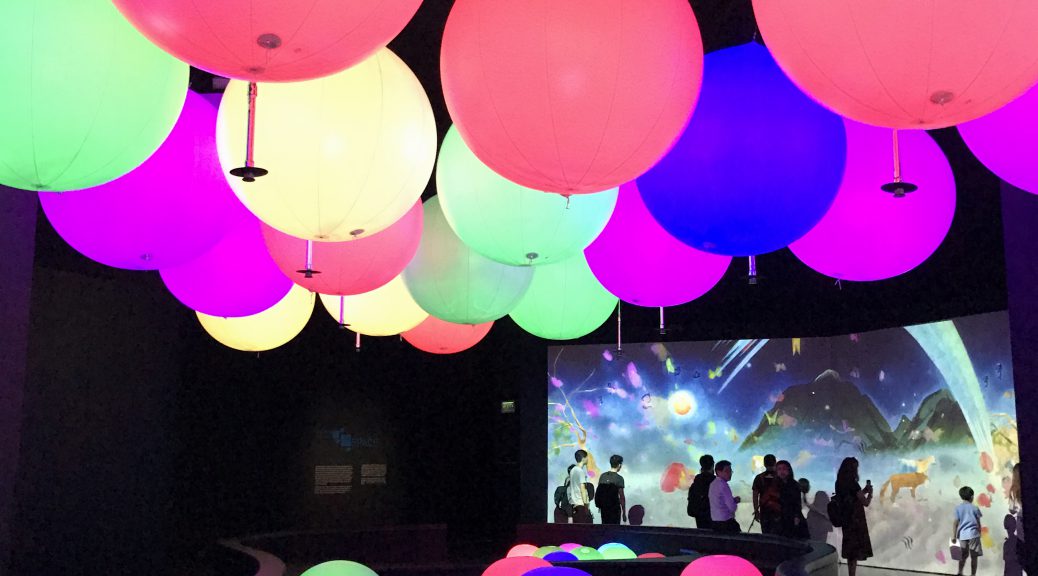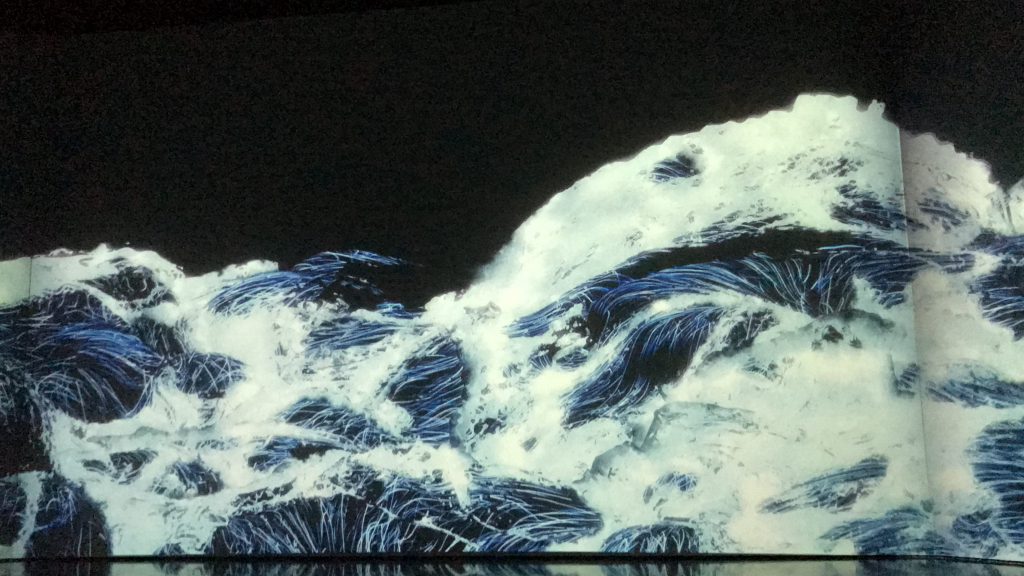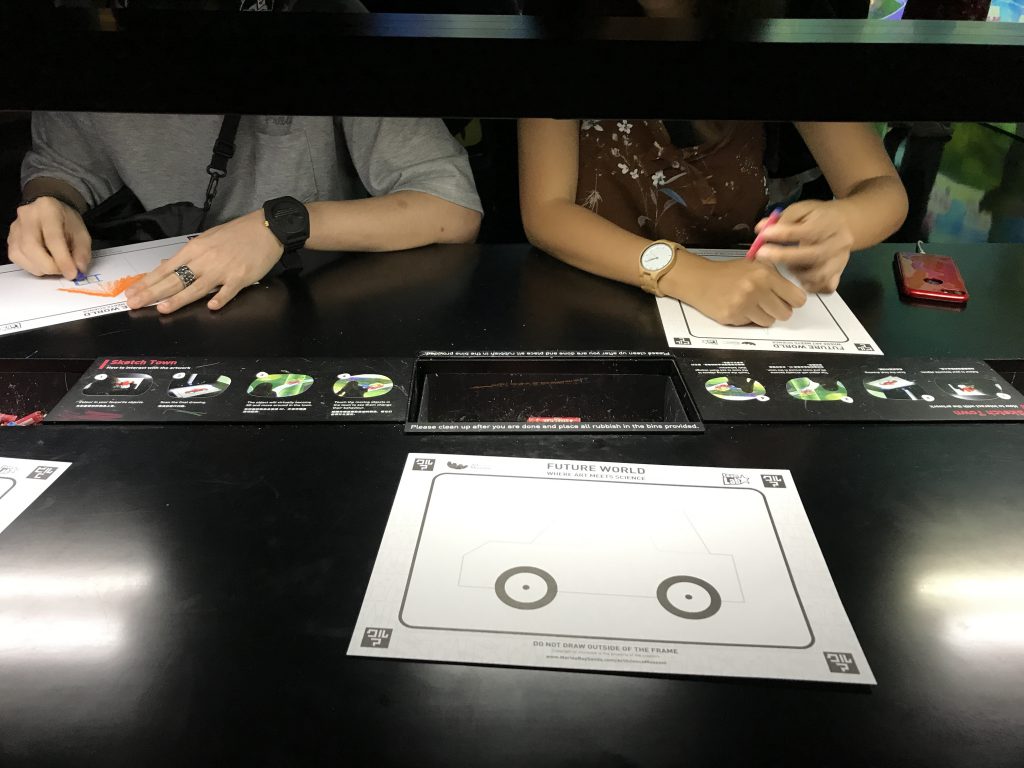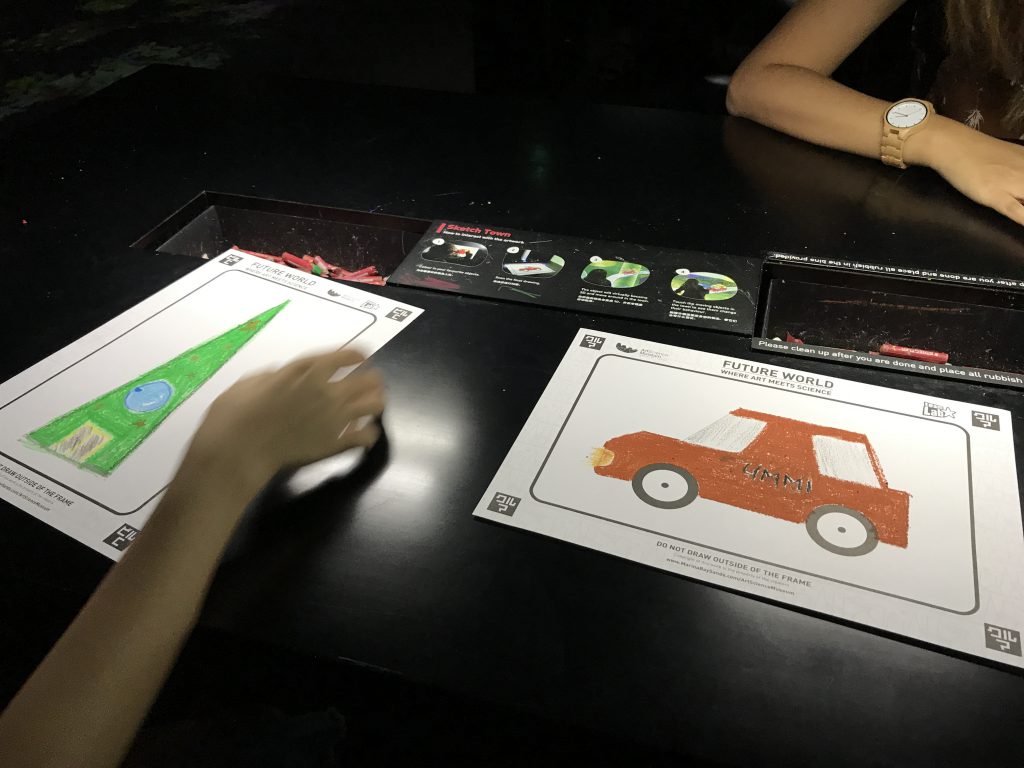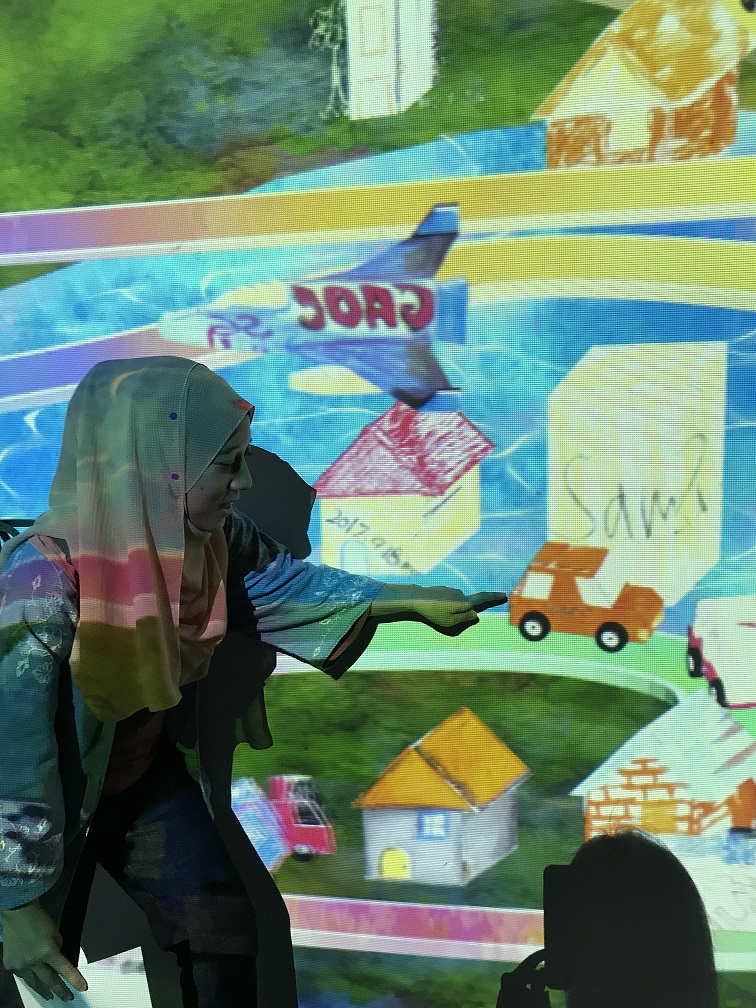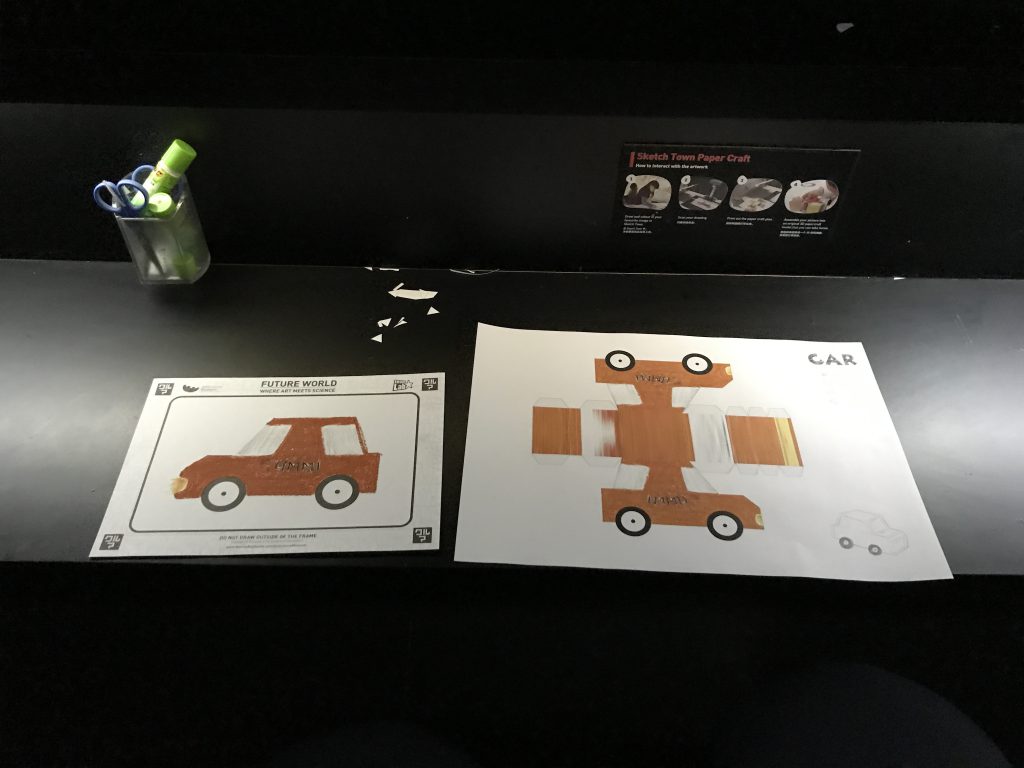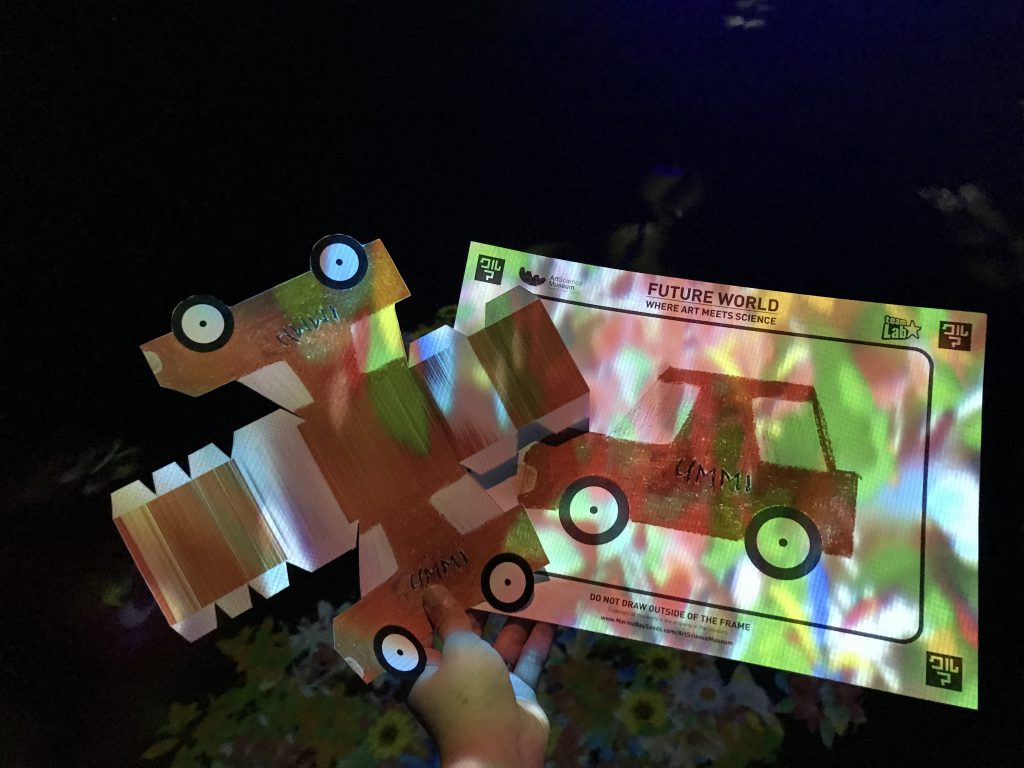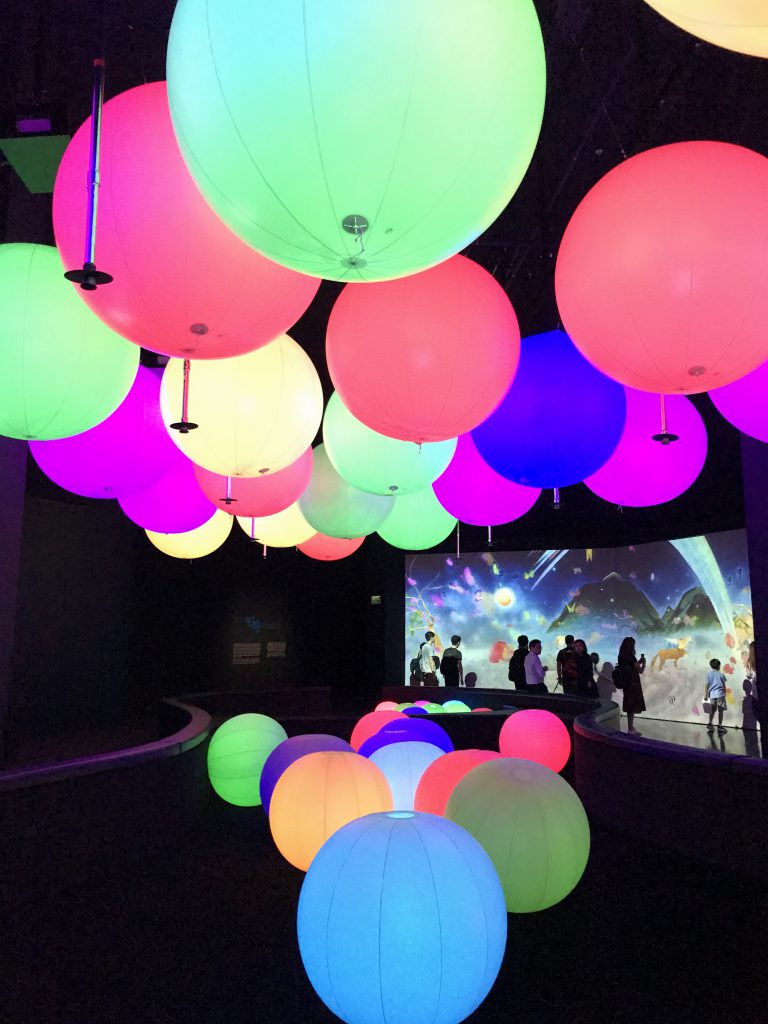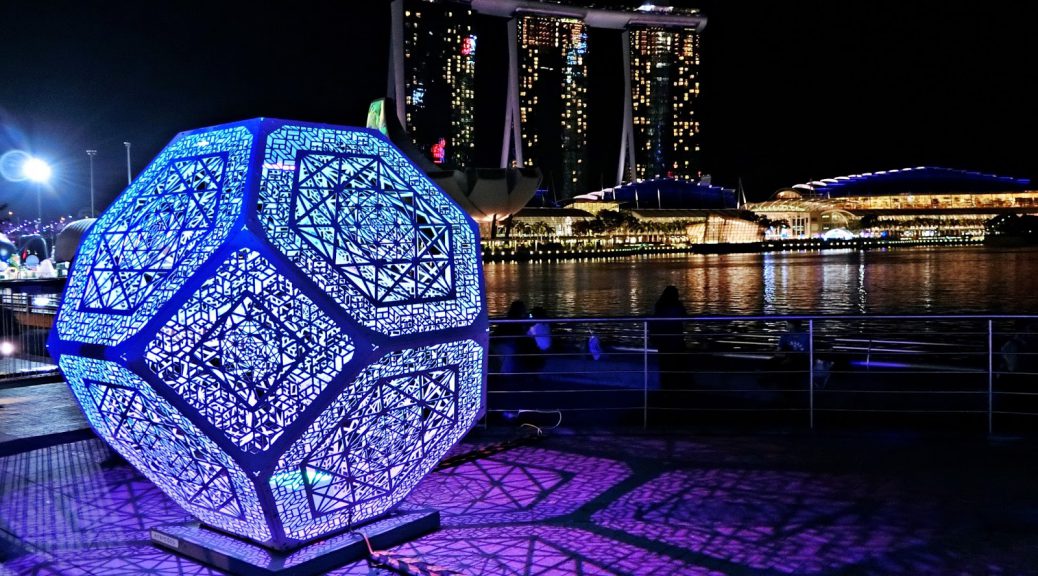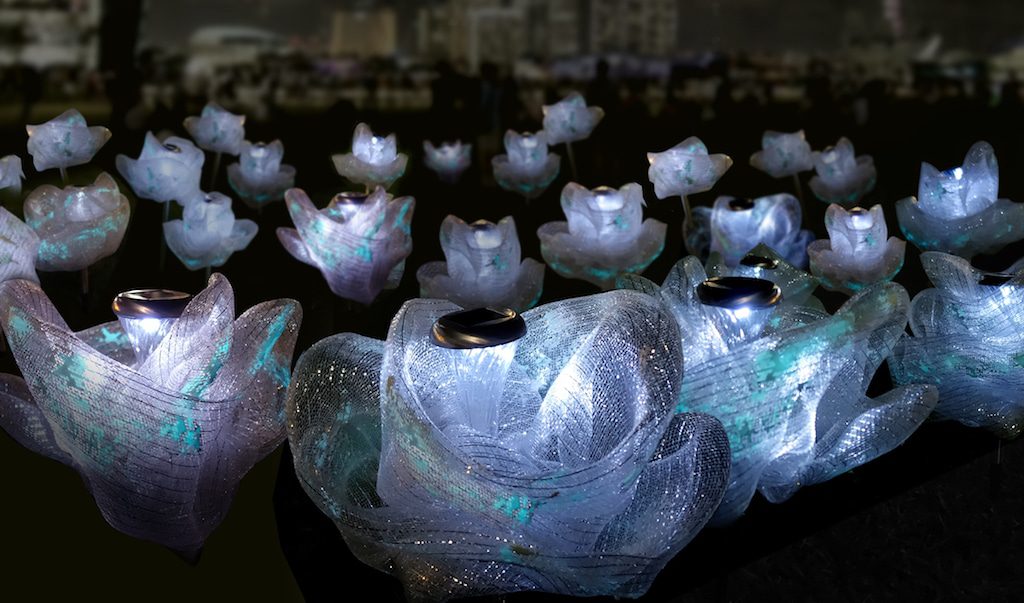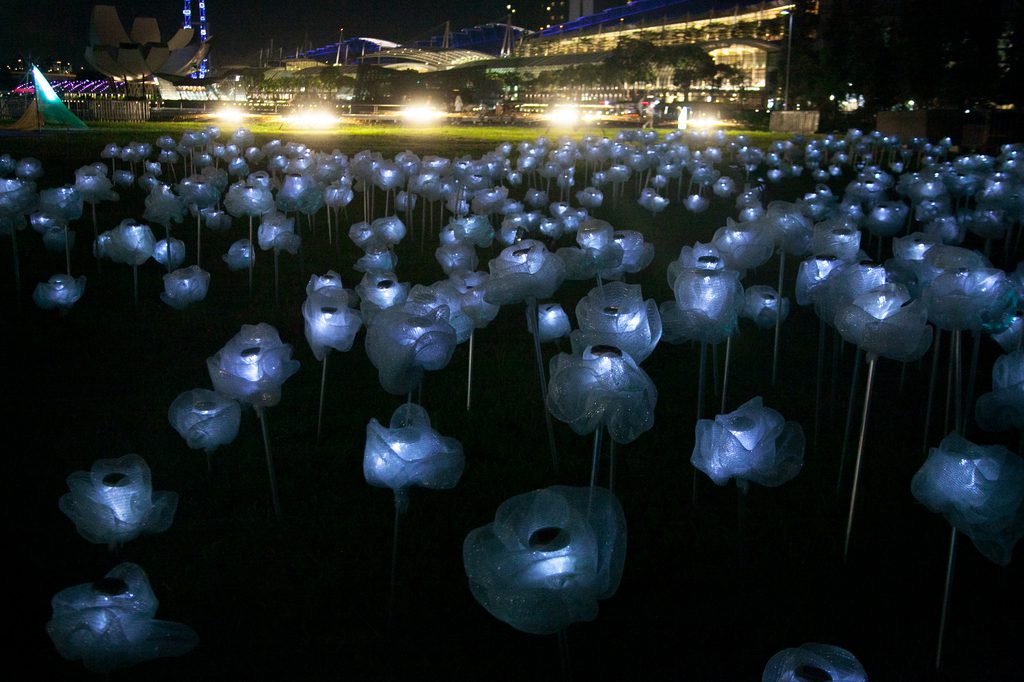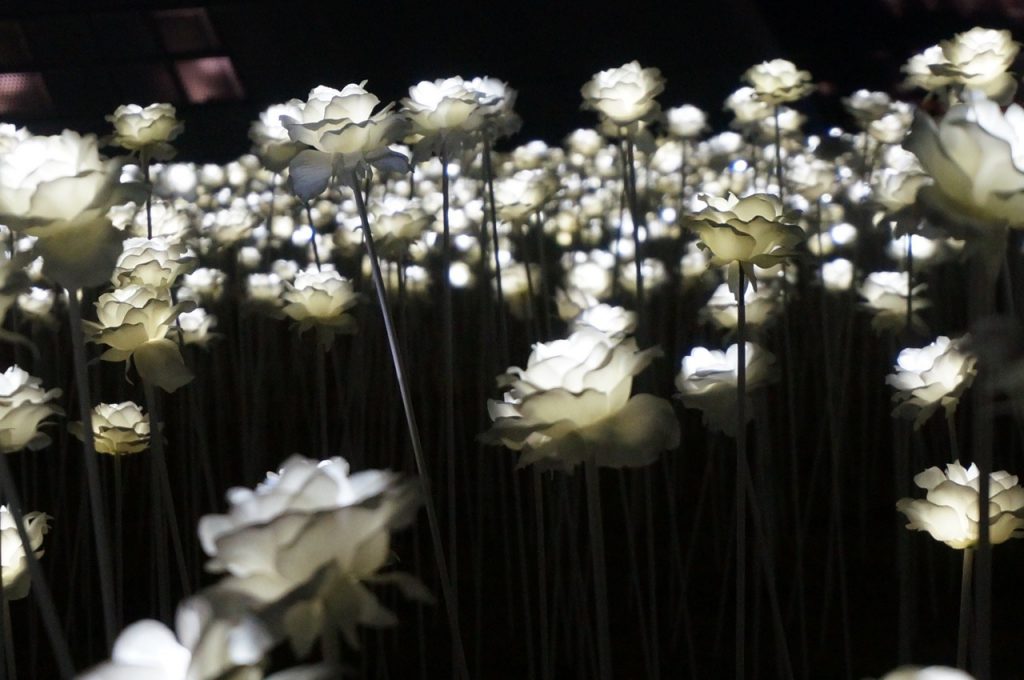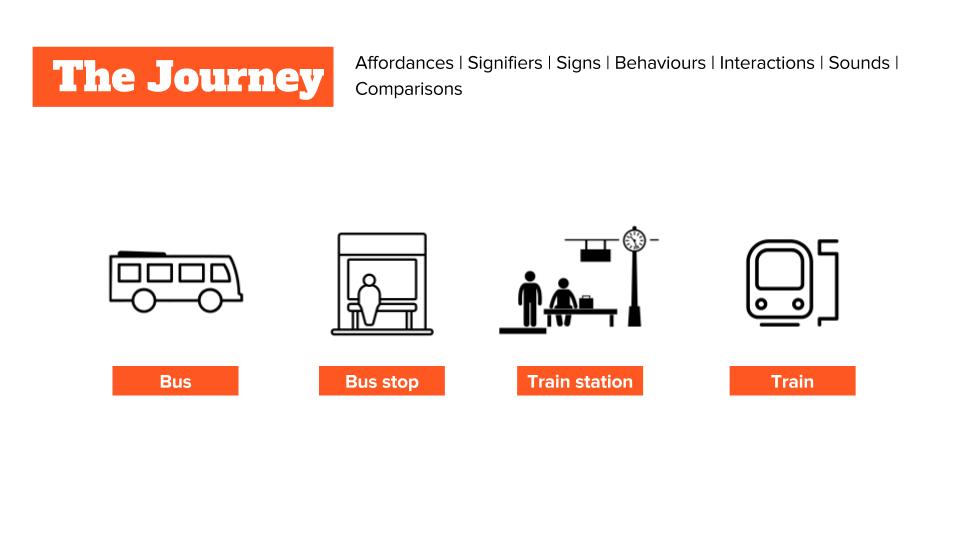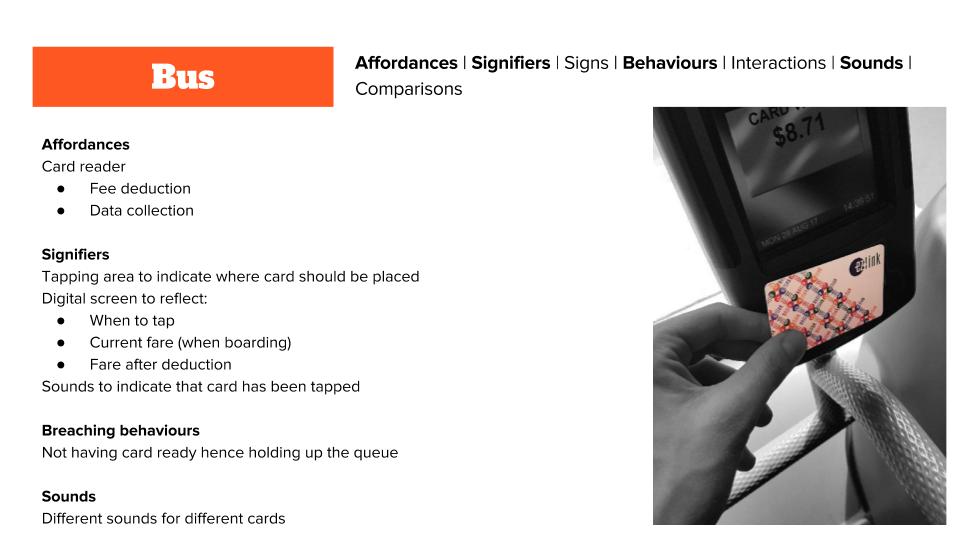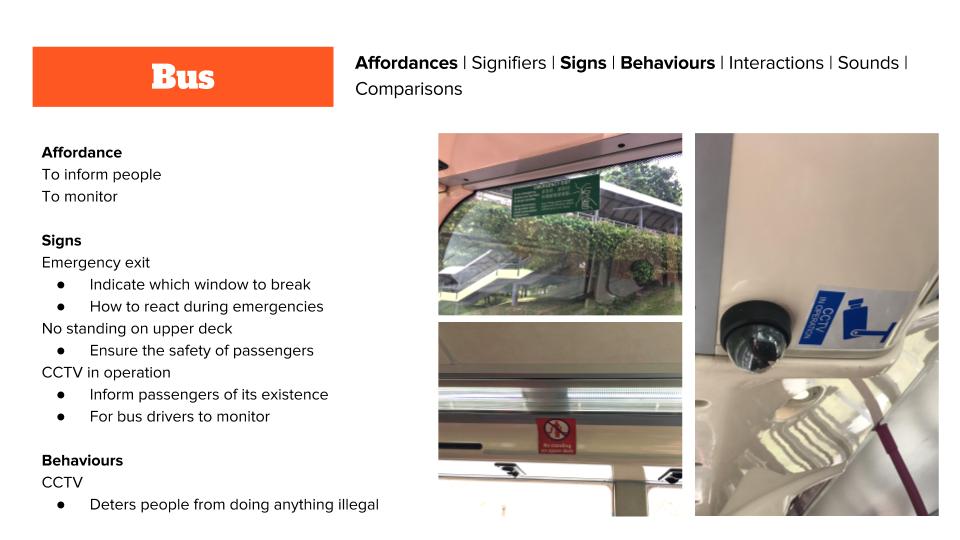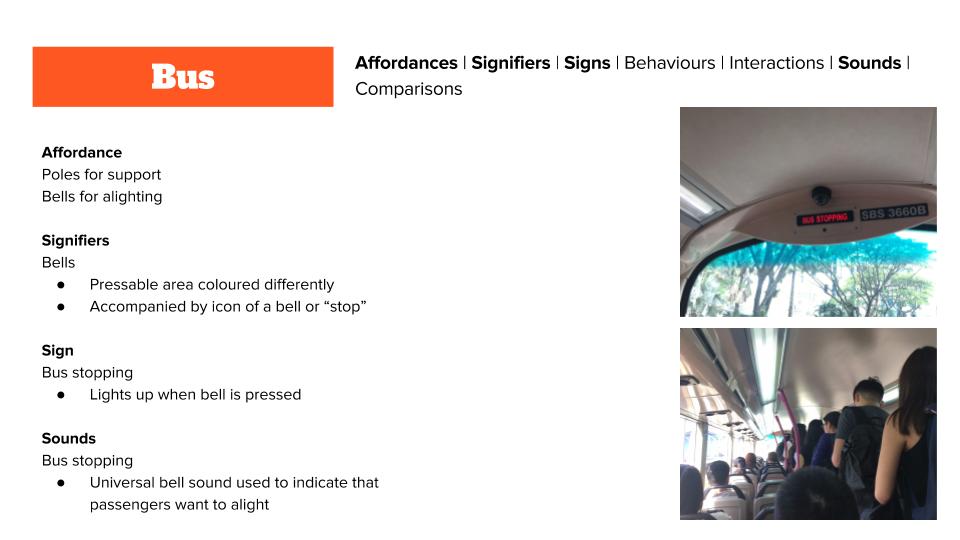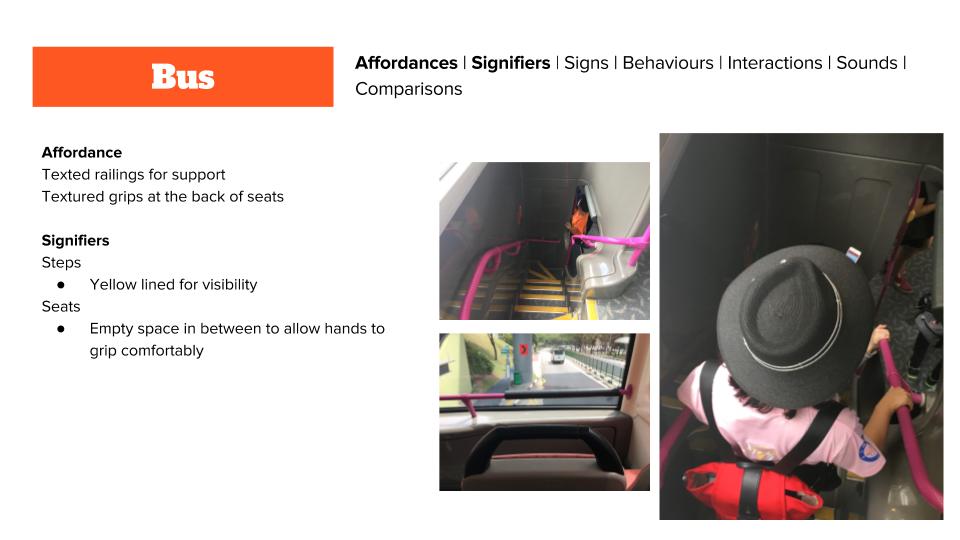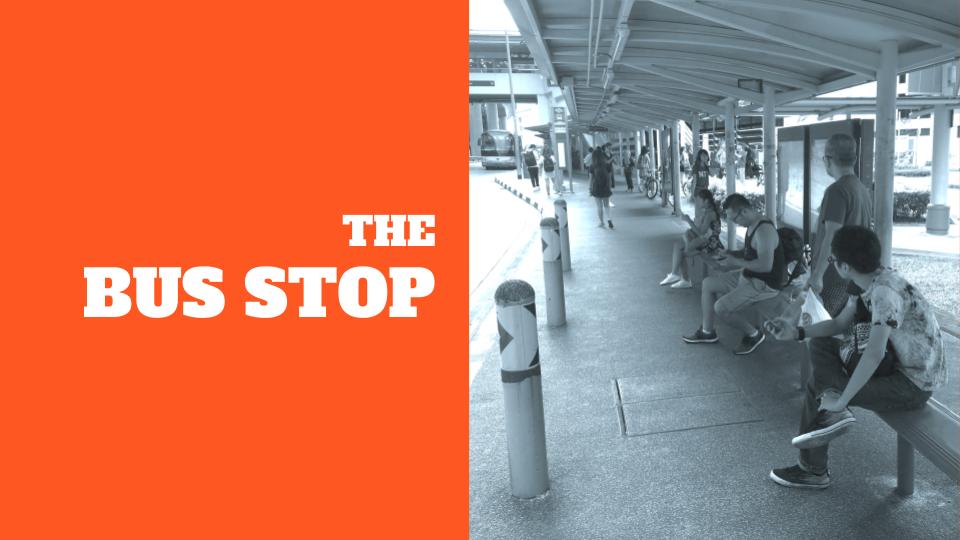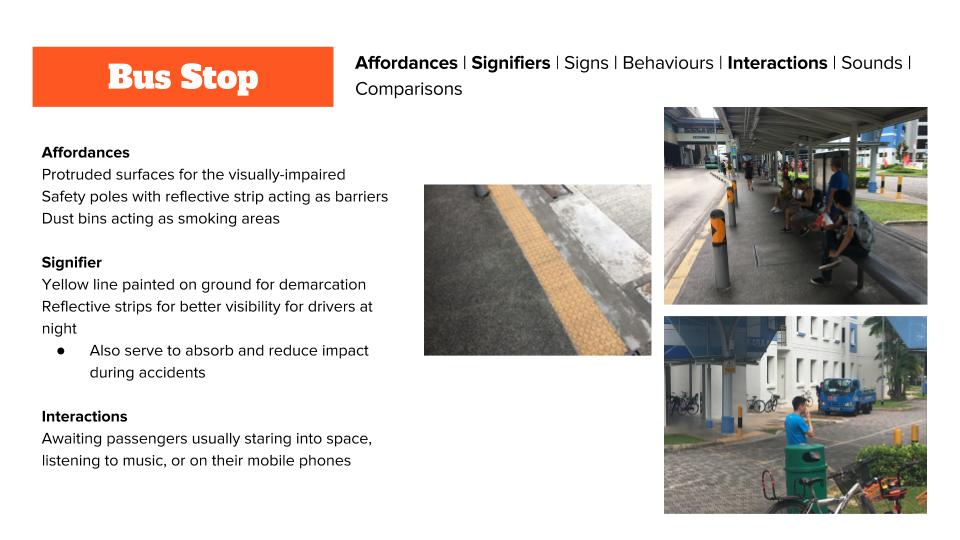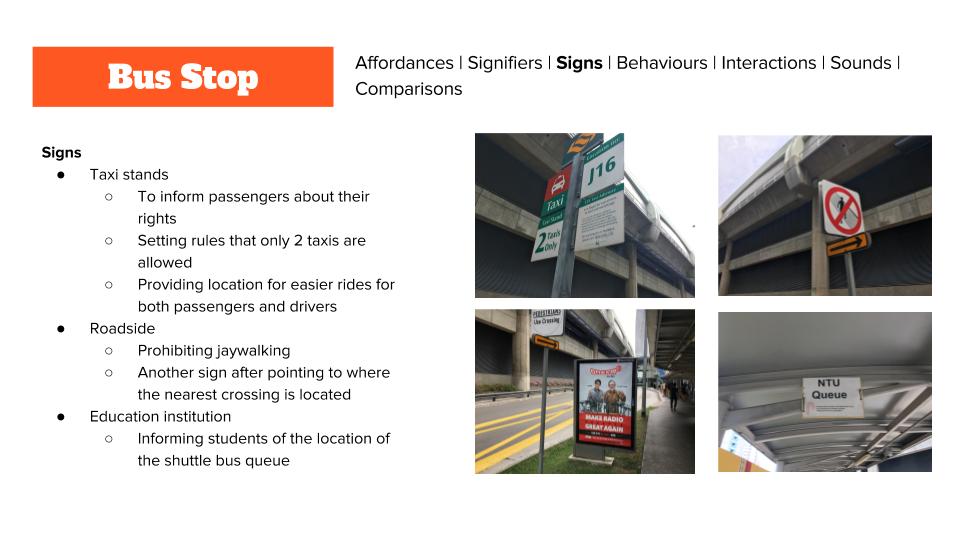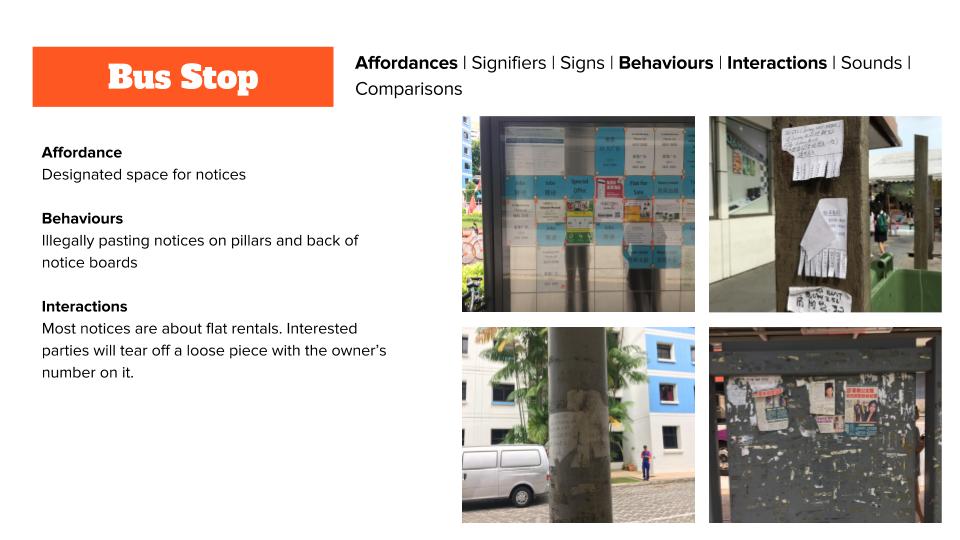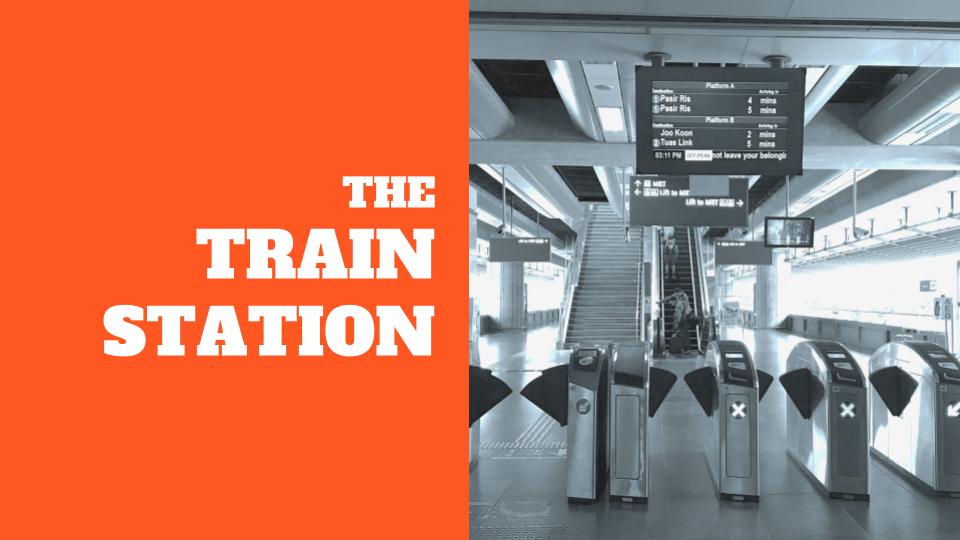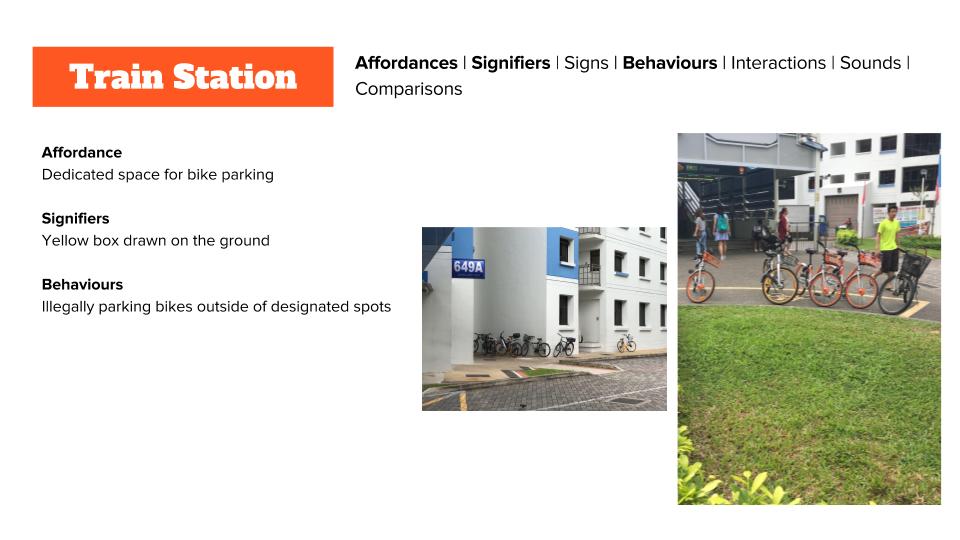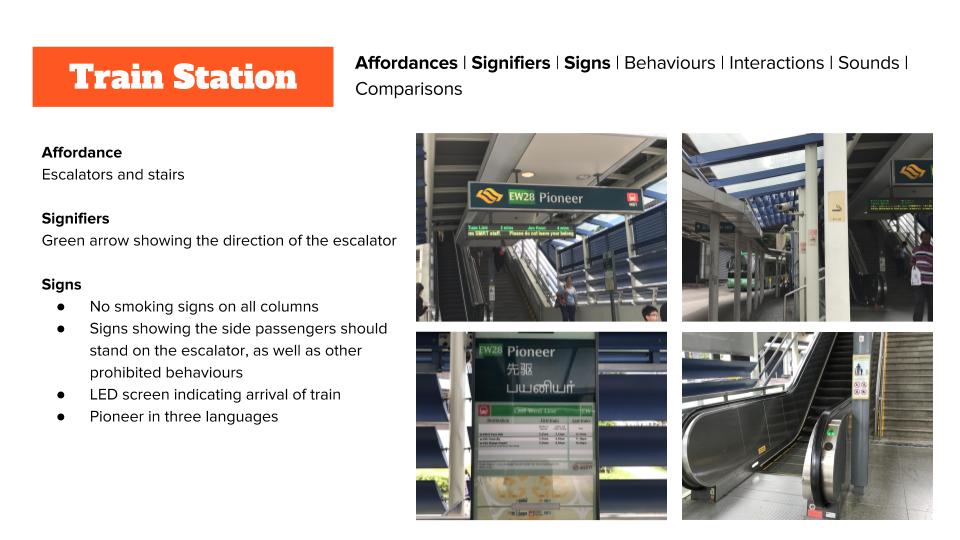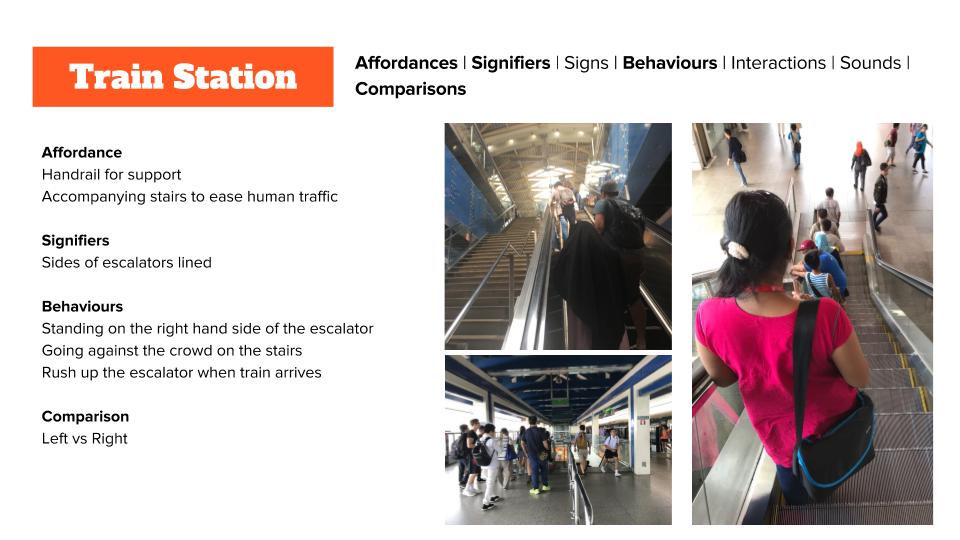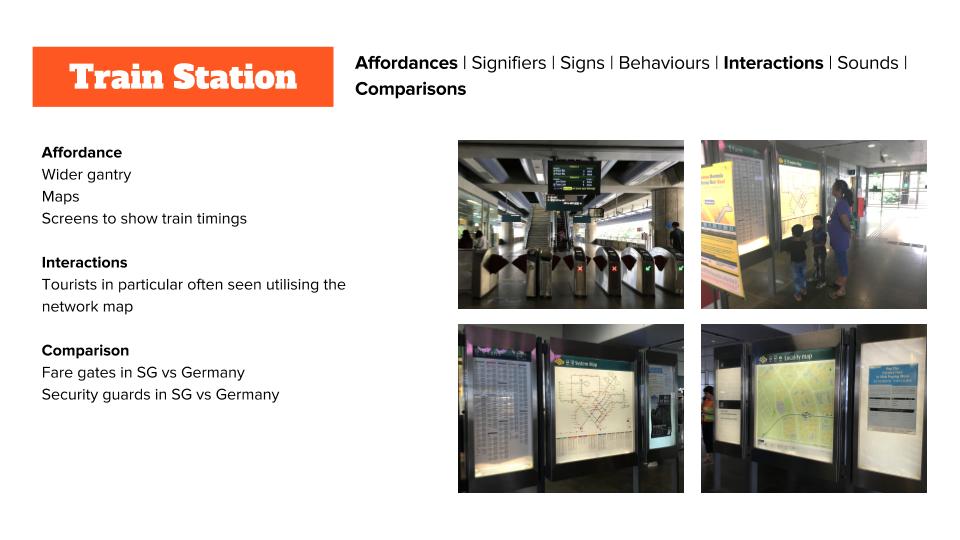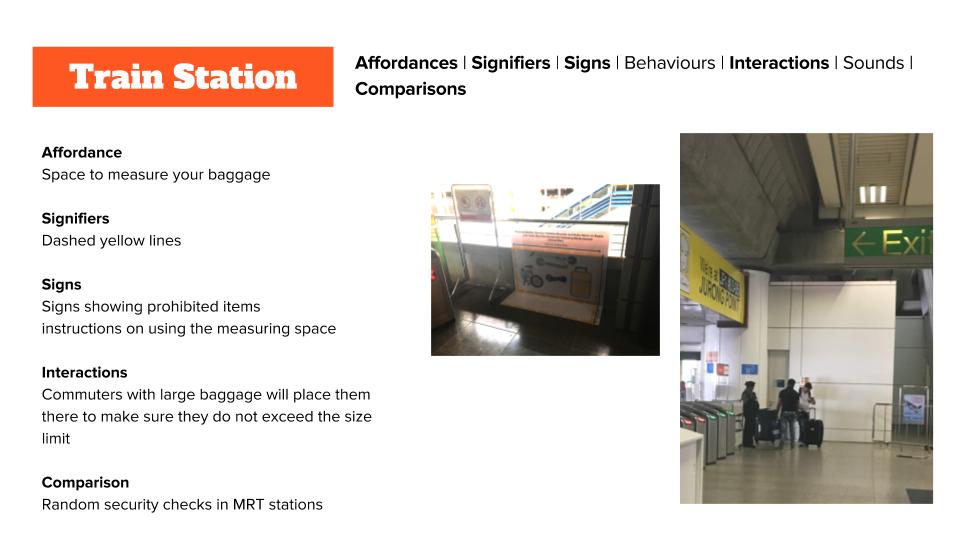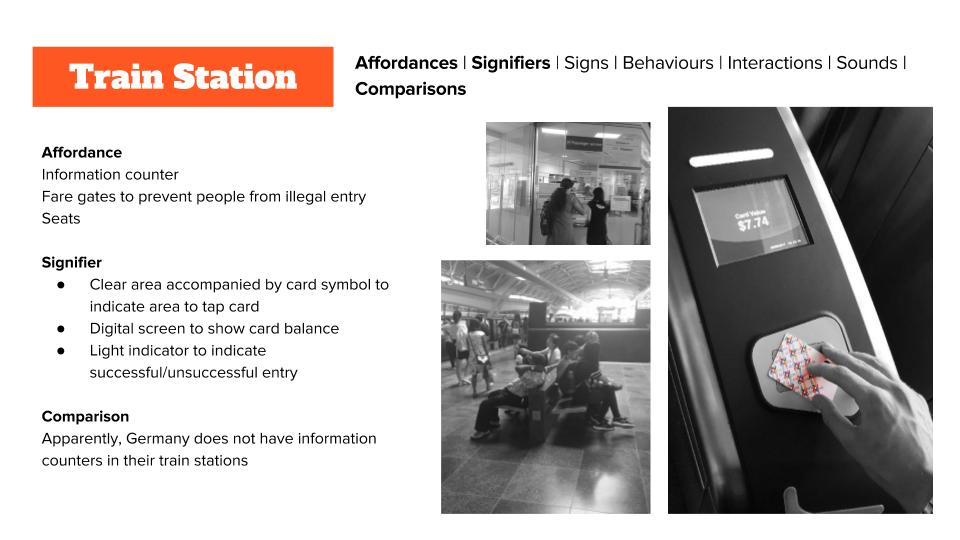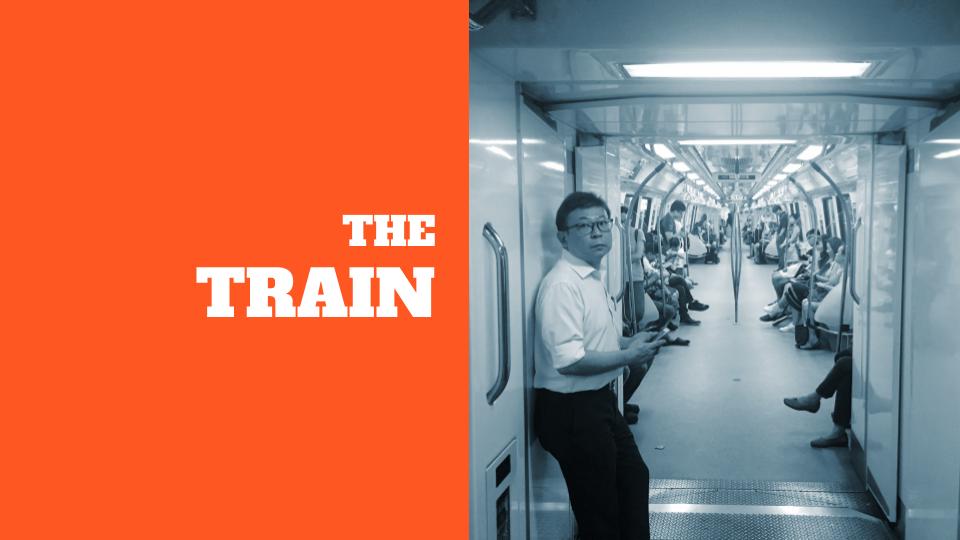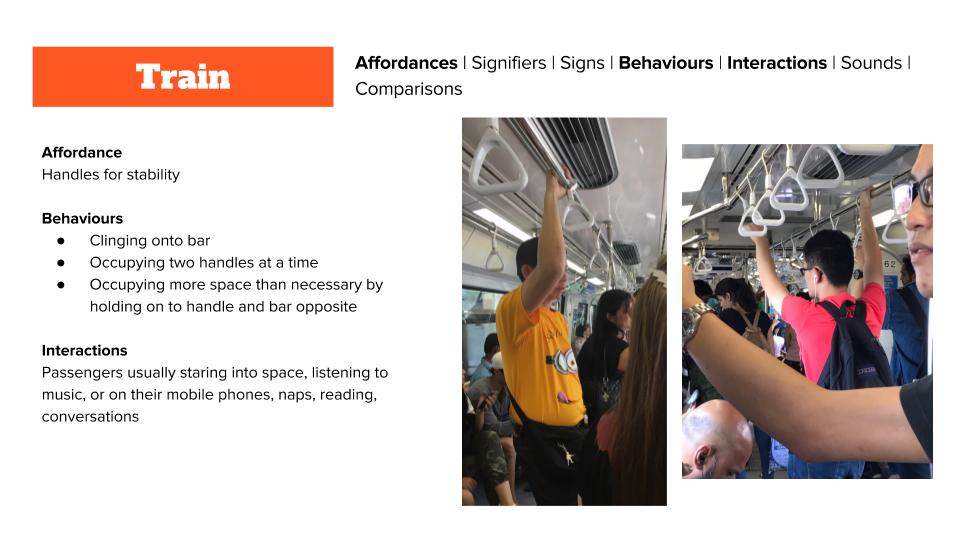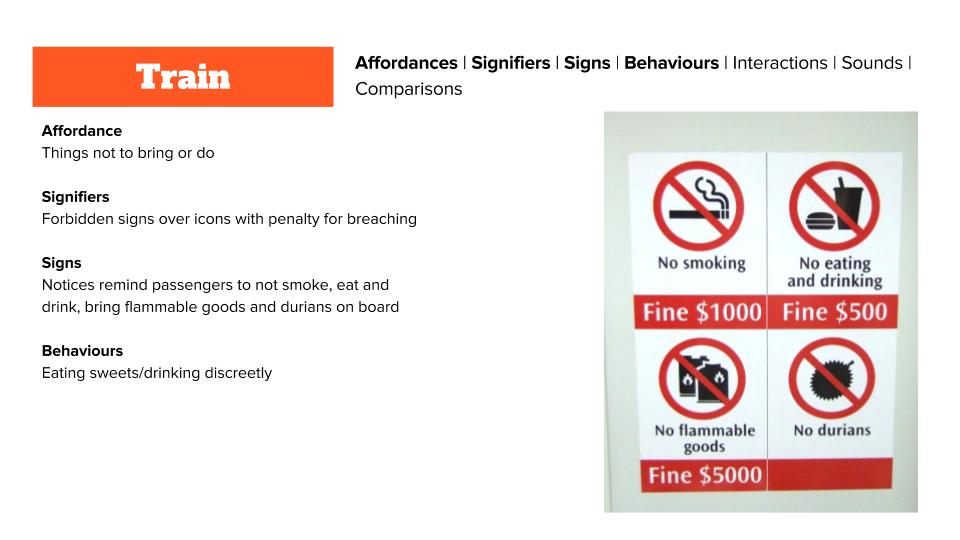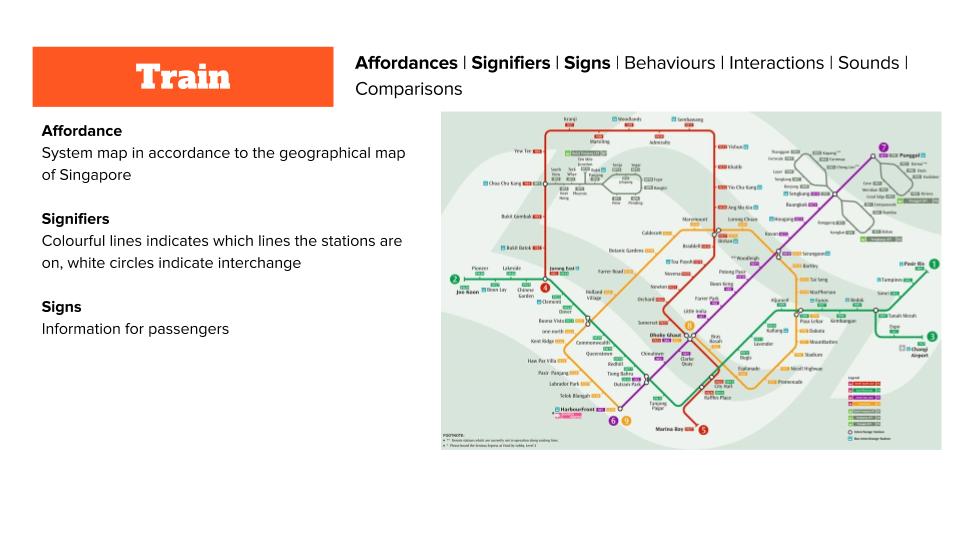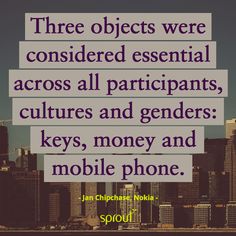- reflection on how and what you experienced, observed, and learned from the visit
It was my first ever trip to Future World @ ArtScience Museum. Normally, my attention span for museums and exhibitions are short but Future World managed to make me feel interested and interact with the exhibitions.
The first exhibit; when it was ongoing, all I could think of was trying to keep my mind still as it was slowly making me dizzy.
The second exhibit; although it has the feel of serenity, the sound of waves crashing, it became one of the spots for visitors to have Instagram-worthy photos — which could be an extra outcome of the exhibit too.
With the first two exhibits, I was reflecting back on the previous elective module I took, creating patterns to be made into interactive art at the Media Wall in NTU. It was pretty similar but this exhibit was more intense, with all the details… I was in awe.
Moving on, I was attracted to be a kid again over at the Sketch Town. My friends and I started to choose the things we want to do, and realised that we could scan our colourings to be up at the big screen, appreciating our artworks.
After admiring our artworks up on the screen, we got to know that we could scan our 2D artworks into 3D.
I liked how Sketch Town itself engages the visitors, especially children (and me) into the colouring and seeing their artworks up on the screen. To me, they have achieved the interactivity aspect of the exhibition.
Walking past the next few exhibits got me thinking of how my team and I could incorporate certain technologies into our iLight project. For example, the interchangable lights when user interact with the exhibit?
